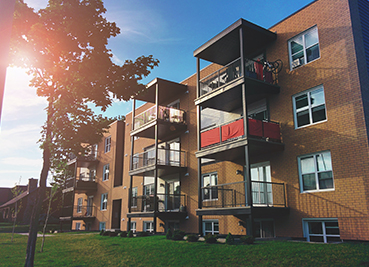
When evaluating historical multifamily cap rates, there has been a consistent spread between cap rates for different asset classes – reflecting the risk-adjusted return associated with various property vintages. However, in the low-interest rate environment following the pandemic, typical pricing variations between asset classes diminished and the spread between Class A, B and C asset cap rates was compressed.
This cap rate compression was due to a flood of capital into equity and debt markets looking to capitalize on the multifamily market’s resiliency post-pandemic and outsized projected annual rent increases. However, as interest rates have risen and will continue to climb for the balance of the year, cap rates are expanding in all asset classes and a natural spread between Class A, B and C assets should occur.
Compared with other core markets around the U.S., the Denver multifamily market is relatively new to institutional investors. Over the past decade, the size and nature of multifamily transactions occurring in Denver elevated both the market’s visibility and desirability for investors. This increased market interest is evidenced by Denver’s total multifamily transaction volume increasing from $3.3 billion in 2014 to $10.5 billion year over year between the second quarters of 2021 and 2022.
Over the same time period, cap rates in the Denver market functioned in line with the historical norm of other markets – with a 116-basis point spread between cap rates for Class A and Class C assets, with Class B assets generally splitting the difference. Though cap rates began to tighten in 2018 and 2019, there was still a demonstrable spread between Class A, B and C assets. In the second quarter of 2018, the Class A and Class C cap rate spread was 90 basis points, with Class B cap rates sitting in the middle.
During the post-pandemic era of ultra-low interest rates and the attractiveness of the multifamily sector, there was a flood of capital into the asset class from traditional equity and debt sources as well as relatively new sources in the form of debt funds, crowdfunding investment managers and other atypical capital sources. The resulting downward pressure on the cap rates of all asset classes led to the elimination of the fundamental cap rate spread in the multifamily sector between assets on a risk-adjusted basis. In the Denver market, there was a 79 basis point spread between Class A and Class C cap rates in the third quarter of 2020. A year later, that spread had compressed to 47 basis points, and in the second quarter of 2022, it was 19 basis points (see chart).
The investment environment that drove cap rates for all multifamily asset classes to historic lows was not sustainable. There has long been discussion around whether cap rates move in lockstep with interest rates; however, since the Federal Reserve began increasing interest rates in March to fight inflation, there has been upward pressure on cap rates. There continues to be a tremendous amount of investor appetite for multifamily assets of all classes, though it remains to be seen if the fundamental spread between Class A, B and C cap rates returns to the market.
Multifamily fundamentals continue to show strength, and the natural inflation hedge of annual lease rollovers is a byproduct that investors will reap the benefits of for years to come. Additionally, when looking at the broader multifamily landscape, an increase in interest rates makes home affordability more challenging as well as making multifamily a more attractive investment.
Note: For this article, cap rate data were analyzed for 2010s-, 1990s- and 1970s-vintage assets, reflecting Class A, B and C asset classes, respectively. Transaction data spans the Denver metro area from the third quarter of 2014 through the second quarter of 2022.




